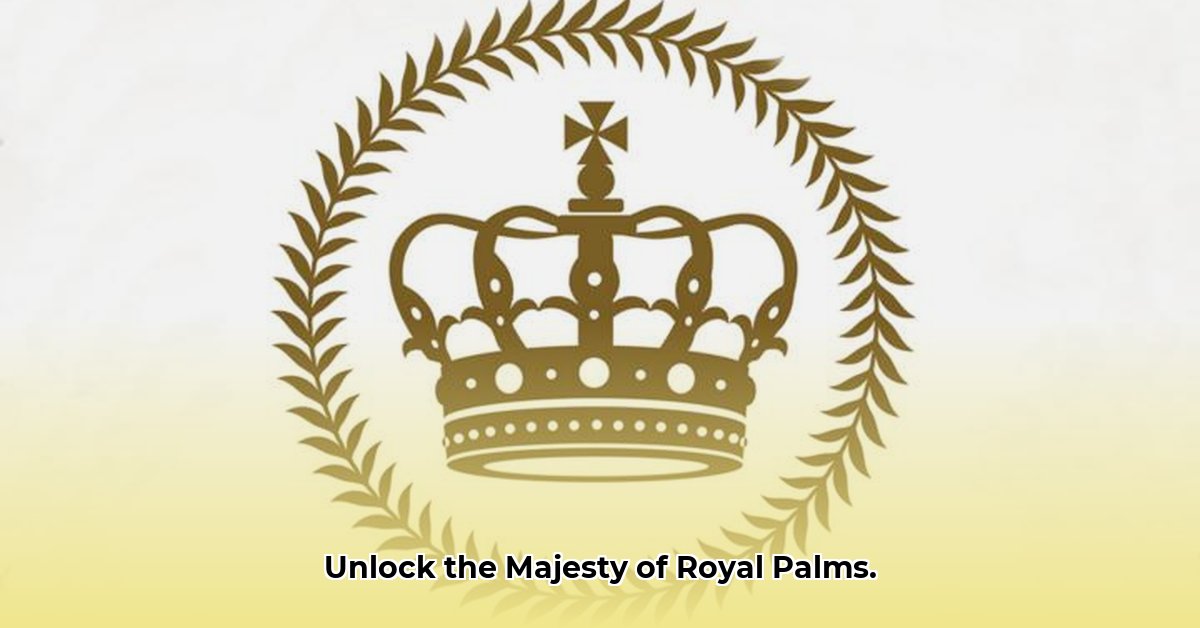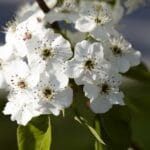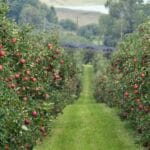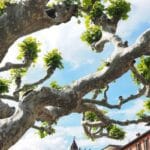Royal palms (Roystonea regia) evoke images of tropical elegance with their towering height and smooth, gray trunks. This guide provides a detailed roadmap for cultivating these majestic trees, covering everything from initial planting to long-term care. Whether you’re a seasoned gardener or a novice, this resource will empower you to nurture a thriving royal palm that enhances your landscape for years to come.
Understanding Royal Palm Cultivation
Successfully growing a royal palm requires careful planning, consistent care, and an understanding of the tree’s specific needs. From selecting the ideal location to implementing a proactive maintenance schedule, each step contributes to the overall health and longevity of your palm.
Selecting the Perfect Location and Planting Techniques
Before planting, consider the mature size of a royal palm. These trees can reach heights of 60 to 80 feet with a spread of 15 to 25 feet, demanding ample space to thrive. Choose a location far from buildings, power lines, and underground utilities to avoid future conflicts. Royal palms flourish in full sun, although young trees can tolerate partial shade.
Proper soil drainage is paramount. Royal palms are susceptible to root rot in waterlogged conditions. Before planting, assess your soil’s drainage and amend accordingly. Conduct a soil test to determine the pH level, which should ideally range from slightly acidic to neutral (6.0-7.0). Heavy clay soils benefit from the incorporation of organic matter such as compost to improve drainage and aeration. Sandy soils can be amended with peat moss to enhance moisture retention.
Follow these steps for optimal planting:
- Dig a hole twice as wide as the root ball and equal in depth.
- Gently remove the palm from its container, taking care not to damage the roots.
- Place the tree in the hole, ensuring the base is level with the surrounding soil.
- Backfill the hole with amended soil, gently tamping to remove air pockets.
- Water thoroughly to settle the soil and hydrate the roots.
Watering and Fertilizing for Optimal Growth
Consistent watering is crucial, particularly during the establishment phase and periods of drought. Deep, infrequent watering encourages deep root growth, making the palm more resilient. Allow the soil to dry slightly between waterings to prevent overwatering, which can lead to root rot. Monitor soil moisture by inserting your finger a few inches into the soil.
Regular fertilization is essential for maintaining the health and vigor of your royal palm. Use a balanced palm fertilizer specifically formulated for these trees. A recommended formula is 8-2-12-4 Mg with added micronutrients, but always adhere to the manufacturer’s instructions. Fertilize regularly during the active growing season (spring and summer), adjusting frequency based on soil nutrient levels determined by a soil test.
Pruning Techniques for Health and Aesthetics
Pruning is necessary to remove dead or damaged fronds, maintain the tree’s aesthetic appeal, and minimize potential safety hazards. Use sharp, clean pruning tools to make clean cuts close to the trunk. Wear protective gear, including eye protection and gloves, to safeguard against falling fronds, which can be heavy and cause injury. Remove only dead or damaged fronds and avoid removing more than one-third of the total fronds at any given time.
“Proper pruning is essential for maintaining the health and structural integrity of royal palms,” advises [Dr. Marcus Flores], [Certified Arborist] at [Florida Palm Consulting]. “Removing dead or diseased fronds not only enhances the tree’s appearance but also reduces the risk of pest infestations and fungal diseases.”
Managing Pests and Diseases
Royal palms are susceptible to various pests and diseases that can compromise their health. Regular monitoring is crucial for early detection and prompt intervention.
The Royal Palm Bug (Xylastodoris luteolus) is a common pest that feeds on the tree’s leaves, causing discoloration and damage that mimics nutrient deficiencies. Inspect your palm regularly for signs of infestation and treat accordingly with an appropriate insecticide.
Ganoderma butt rot and Thielaviopsis trunk rot are serious fungal diseases that can lead to the decline and death of royal palms. Prevention is key. Avoid wounding the trunk, maintain good drainage, and ensure proper air circulation around the tree. If you suspect a fungal infection, consult a certified arborist for diagnosis and treatment options.
Prioritizing Safety Measures
The sheer size of mature royal palms presents inherent safety considerations. Falling fronds pose a potential hazard, especially in high-traffic areas. Implement the following safety measures:
- Regularly prune dead or damaged fronds to minimize the risk of falling debris.
- Establish a safety zone around the base of the tree to prevent pedestrian traffic.
- Carefully consider the tree’s location, avoiding proximity to structures, walkways, and power lines.
- In windy locations, consider additional support or cabling to prevent toppling.
Royal Palm Maintenance Calendar
| Task | Frequency | Important Considerations |
|---|---|---|
| Watering | As needed | Deep, infrequent watering is preferable; allow soil to dry slightly between waterings. |
| Fertilizing | Every 2-3 months | Use a balanced palm fertilizer and follow package instructions; conduct soil tests to guide nutrient applications. |
| Pruning | Annually, as needed | Remove only dead or damaged fronds; use proper safety precautions; avoid over-pruning. |
| Pest & Disease Inspection | Monthly | Inspect regularly for signs of pests or diseases; take prompt action to address any issues. |
Addressing Common Problems
- Yellowing leaves: This can indicate nutrient deficiencies (potassium, manganese, magnesium, or boron), overwatering, or poor drainage. Conduct a soil test to identify nutrient deficiencies and adjust watering practices accordingly.
- Leaf browning or frizzling: This can be caused by nutrient deficiencies, pest infestations (Royal Palm Bug), or salt damage. Treat pest infestations promptly and consider salt-tolerant varieties in coastal areas.
- Trunk rot: This is a serious condition that requires professional intervention. Consult a certified arborist for diagnosis and treatment options. Early detection is crucial for improving the chances of saving the tree.
Planning for Long-Term Success
Cultivating a thriving royal palm requires a long-term commitment to proper care and maintenance. Consider the following factors for ensuring the long-term success of your palm:
- Local regulations: Check local ordinances and regulations regarding tree planting, particularly near power lines and buildings.
- Professional consultation: Consult with a certified arborist for expert advice on tree selection, planting, and ongoing care.
- Ongoing research: Stay informed about the latest advancements in royal palm cultivation to optimize your care practices.
By following these guidelines, you can cultivate a magnificent royal palm that enhances your landscape and provides beauty and enjoyment for generations to come.
- Unlocking Flight: The Wright Brothers’ Engineering Triumph:A Meticulous Process - August 4, 2025
- Churchill’s Wilderness Years: From Exile to Prime Minister - August 4, 2025
- Unlocking Time’s Secret: The Arrow of Time, Past vs. Future Insights - August 4, 2025















